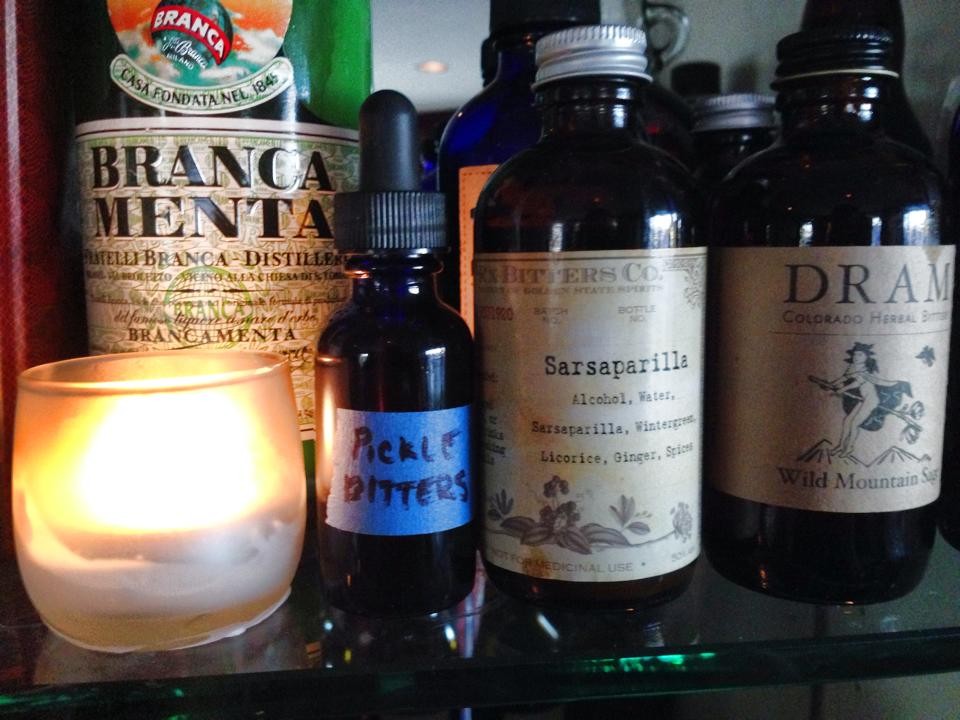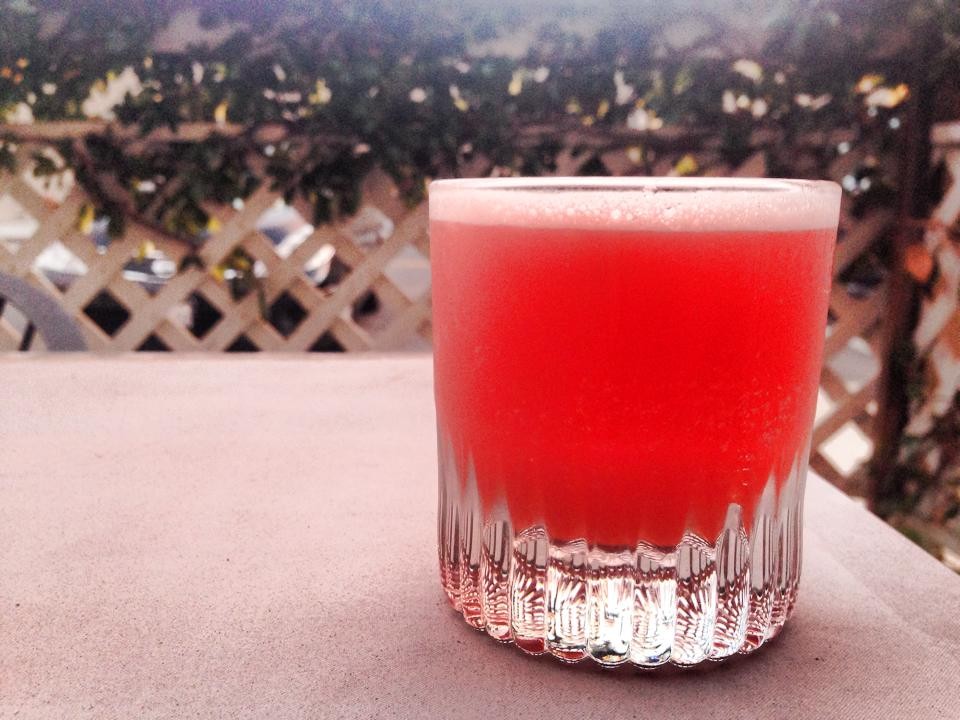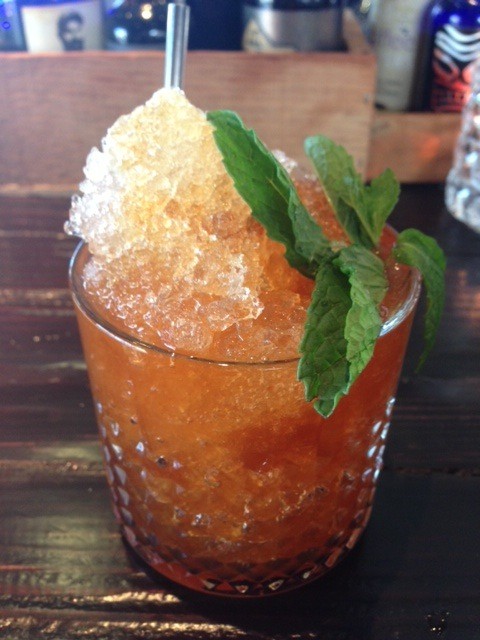
Twenty-one dashes of Angostura, Peychaud's, and orange bitters later, Jefferson Van Billiard has all the ingredients he needs to make The Sawyer. The bitters, added to a basic blend of gin, lime juice, and simple syrup, paint the transparent liquid a luscious magenta when mixed. The drink looks sweet and fruity but — like Tom Sawyer himself — it's a deception. Instead of fruity sweetness, The Sawyer tingles the jaw with the tartness of the lime and dries the palate with the gin. The Sawyer is anything but light and sugary, and that's all due to the unsung hero of cocktails: bitters.
]

Van Billiard is one of several bartenders in Orange County who's taking the time and effort to examine one of the least thought about ingredients in cocktails — bitters. He blends his own, combining water, alcohol, spices and herbs. The ingredients are basic enough, but it is the process of macerating, balancing, steeping, filtering and waiting over two to six weeks that makes the effort so taxing. The outcome, however, elevates a cocktail from simple to savory with just a few dashes.
In the era of latté art, cronuts and artisanal toast, food isn't just fuel anymore; it's art. Everything down to the salt and pepper can be handpicked. For bartenders, bitters are as important to a cocktail as seasoning is to steak.
“To me,” Van Billiard says, “I think bitters are basically the salt [of cocktails] because salt doesn't just add saltiness, it brings out and enhances other flavors.”
Van Billard's bitters cabinient contains flavors as expected natural as vanilla and as unique as lemongrass. But how did it begin? Necessity. Van Billiard's started making his own bitters about a year ago when he realized a particular flavor he required for an original cocktail didn't exist.
“I was trying to make a drink that was very 'brunch-y' ,but I couldn't find the right pickle bitters that had the right zing to it,” Van Billiard says. “It either fell flat or kinda tasted like cucumber. That pickle zest — I wanted that, and I couldn't find it. [Making bitters] kind of came out of necessity, really.”
Koire Rogers makes sure his co-owned restaurant, ARC Food and Libations, keeps anywhere from 20 to 30 different bottles of bitters at all times.
For the last three to four years, Rogers has taken his bartending practice to the next level by making his own bitters.
“You can tailor make things how you want,” says Rogers. “I think that's what's important about making your own bitters. You control the quality.”
The process can actually save money in the long run. Having bought humble bags of spices when he first opened the restaurant 14 months ago, Rogers has yet to replenish his stock of vanilla pods, star anise, cinnamon sticks and other spices.
But control does come at a cost — time. It takes Rogers a month to concoct a modest 25-ounce batch of bitters. Tacks on another two weeks while the bitters age in oak barrels and it can be six weeks before they're ready to use.
For some, the time commitment, inconsistency and the rise of commercially available artisanal bitters makes mixing customs not make sense.
Gabrielle Dion, owner of craft cocktail shop The Mixing Glass, appreciates the value of bitters but seldom takes the time to make them herself anymore.
“It's too time consuming,” says Dion. “It's not consistent for the bar setting.”
Dion makes sure to offer an array of unique bitters from top quality producers.
She has an entire display of about 30 different brands and flavors from around the country. Curious? You can try before you buy. Dram from Colorado produces honey chamomile bitters. Bitter Tears in Los Angeles tinkers with infusions of blood orange, ginger and tamarind. Want some southern spice? Try El Guapo's chicory-pecan or gumbo bitters from Louisiana.
The new bitters have made things easier on many bartenders, who can go back to spending time on their cocktails.
[

Lucie Wood, one half of the bartending duo of Steamers Jazz Club and Cafe in Fullerton, understands the work involved in making house bitters but says, “I'm interested in making cocktails, not bitters.”
“Unlike, say, 5 years ago, there are so many types of bitters available these days, ranging from the mediocre to the sublime,” she says. “So I prefer to leave the hard part to the experts.”
However, Wood explains that the jazz club does still explore with tinctures. Bitters and tinctures differ in that tinctures lack a bittering agent but still deliver a punch of flavor.
Like bitters, tinctures allow the bartender to use a concentrated ingredient to accent the body of the beverage. Bitters, however, oftentimes carry with them “undesirable flavor elements,” Wood says, and they can offset the expected flavor profile of a particular cocktail.
“For instance, Bittermens makes Habañero Shrub [bitters], but it has red wine vinegar in it and therefore affects the sweet-sour balance of cocktails, so we make a simple habañero tincture,” Wood explains. “That way we can add heat to a cocktail in small doses without potentially ruining an entire bottle of booze by infusing the base spirit.”
If concentrating one infused ingredient sounds easier than making bitters, that's because it is. A bartender could theoretically make over 100 different tinctures in the time it took to make one batch of bitters. Tinctures take a fraction of the time it requires to conjure up even the most basic of bitters recipes. “We're talking a few hours from start to finish,” says Wood.
But while not all cocktails call for them and not all bartenders are making them, bitters prove themselves essential for the drinks that require them. Traditional Manhattans and Sazeracs would be reduced to a shallow blend of whiskey and garnish without the depth added by bitters. They are like the booming bass of a rock n' roll band, the supporting role to the lead actor, the spine of a stiff drink.
“Any time I have a cocktail that I'm trying to work out, nine times out of ten, bitters [are the answer],” Van Billiard says. “It's just that final layer of complexity.”
Follow Stick a Fork In It on Twitter @ocweeklyfood or on Facebook! And don't forget to download our free Best Of App here!
You can also follow Cleo Tobbi on Twitter @CleoTobbi.

